Ford Puma VS Vauxhall Combo – Specs, Efficiency & Price Comparison
Which model is the better choice – the Ford Puma or the Vauxhall Combo? We compare performance (168 HP vs 136 HP), boot capacity (523 L vs 850 L), efficiency (13.10 kWh5.40 L vs 18.50 kWh5.50 L), and of course, the price (24800 £ vs 24000 £).
Find out now which car fits your needs better!
The Ford Puma (SUV) is powered by a Petrol MHEV or Electric engine and comes with a Manuel or Automatic transmission. In comparison, the Vauxhall Combo (High Roof Estate) features a Electric or Diesel engine and a Automatic or Manuel gearbox.
When it comes to boot capacity, the Ford Puma offers 523 L, while the Vauxhall Combo provides 850 L – depending on what matters most to you. If you’re looking for more power, you’ll need to decide whether the 168 HP of the Ford Puma or the 136 HP of the Vauxhall Combo suits your needs better.
There are also differences in efficiency: 13.10 kWh5.40 L vs 18.50 kWh5.50 L. In terms of price, the Ford Puma starts at 24800 £, while the Vauxhall Combo is available from 24000 £.
Compare all the key specs now and find out which model fits your lifestyle best!
Ford Puma
The Ford Puma presents itself as a stylish compact SUV with a distinctive design that combines practicality with a dynamic driving experience. Its sleek lines and sporty aesthetics make it stand out on the road, while the interior offers a comfortable and tech-savvy environment. With an emphasis on efficiency and a smooth drive, the Ford Puma is well-suited for both urban commutes and countryside adventures.
details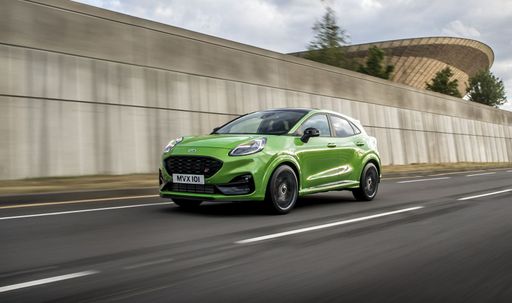 @ puma.fordpresskits.com
@ puma.fordpresskits.com
 @ puma.fordpresskits.com
@ puma.fordpresskits.com
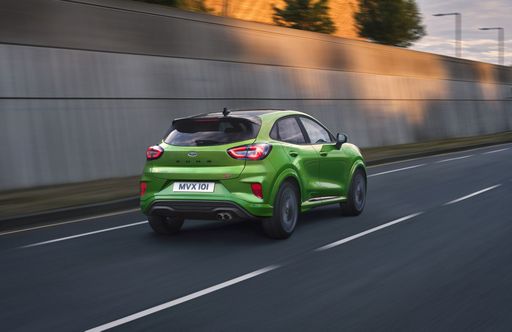 @ puma.fordpresskits.com
@ puma.fordpresskits.com
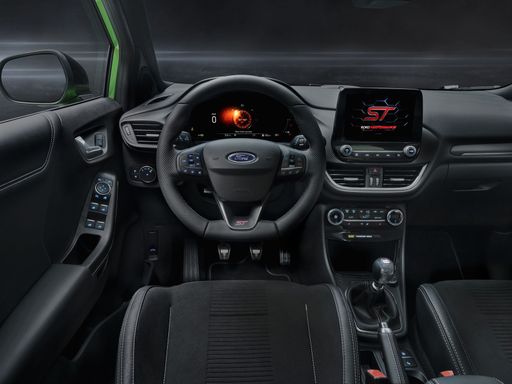 @ puma.fordpresskits.com
@ puma.fordpresskits.com
Vauxhall Combo
The Opel Combo high-roof estate car stands out for its impressive versatility, making it an ideal choice for both families and professionals. Its spacious interior and clever storage solutions ensure a comfortable ride and plenty of room for all your needs. With a focus on practicality and efficient design, the Combo seamlessly combines functionality with modern driving technology.
details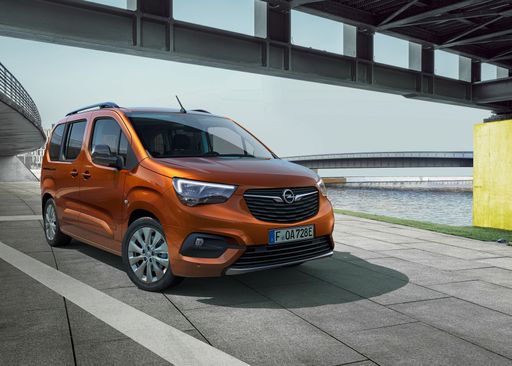 @ media.stellantis.com
@ media.stellantis.com
 @ media.stellantis.com
@ media.stellantis.com
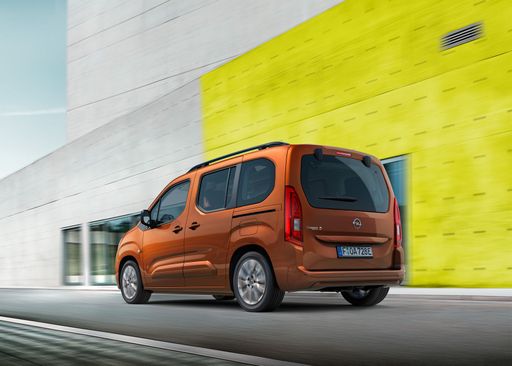 @ media.stellantis.com
@ media.stellantis.com
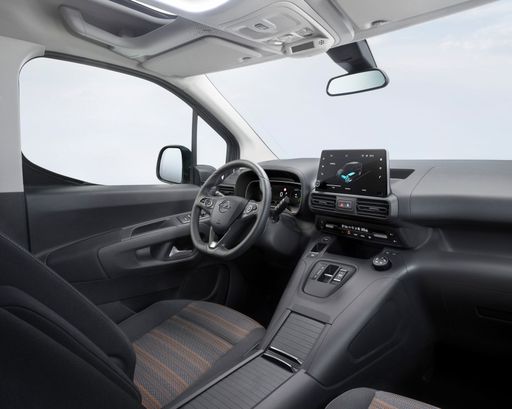 @ media.stellantis.com
@ media.stellantis.com

|

|
|
|
|
Costs and Consumption |
|
|---|---|
|
Price
24800 - 36300 £
|
Price
24000 - 36500 £
|
|
Consumption L/100km
5.4 - 6 L
|
Consumption L/100km
5.5 - 5.9 L
|
|
Consumption kWh/100km
13.1 - 13.7 kWh
|
Consumption kWh/100km
18.5 - 18.8 kWh
|
|
Electric Range
364 - 376 km
|
Electric Range
333 - 345 km
|
|
Battery Capacity
43 kWh
|
Battery Capacity
-
|
|
co2
0 - 136 g/km
|
co2
0 - 155 g/km
|
|
Fuel tank capacity
42 L
|
Fuel tank capacity
53 L
|
Dimensions and Body |
|
|---|---|
|
Body Type
SUV
|
Body Type
High Roof Estate
|
|
Seats
5
|
Seats
5 - 7
|
|
Doors
5
|
Doors
4 - 5
|
|
Curb weight
1316 - 1563 kg
|
Curb weight
1530 - 1922 kg
|
|
Trunk capacity
456 - 523 L
|
Trunk capacity
597 - 850 L
|
|
Length
4186 - 4226 mm
|
Length
4410 - 4760 mm
|
|
Width
1805 mm
|
Width
1848 mm
|
|
Height
1550 - 1555 mm
|
Height
1812 - 1818 mm
|
|
Payload
367 - 469 kg
|
Payload
430 - 840 kg
|
Engine and Performance |
|
|---|---|
|
Engine Type
Petrol MHEV, Electric
|
Engine Type
Electric, Diesel
|
|
Transmission
Manuel, Automatic
|
Transmission
Automatic, Manuel
|
|
Transmission Detail
Schaltgetriebe, Automat. Schaltgetriebe (Doppelkupplung)
|
Transmission Detail
Schaltgetriebe, Automatikgetriebe
|
|
Drive Type
Front-Wheel Drive
|
Drive Type
Front-Wheel Drive
|
|
Power HP
125 - 168 HP
|
Power HP
102 - 136 HP
|
|
Acceleration 0-100km/h
7.4 - 9.8 s
|
Acceleration 0-100km/h
11.30 s
|
|
Max Speed
160 - 210 km/h
|
Max Speed
135 - 184 km/h
|
|
Torque
170 - 290 Nm
|
Torque
250 - 300 Nm
|
|
Number of Cylinders
3
|
Number of Cylinders
4
|
|
Power kW
92 - 124 kW
|
Power kW
75 - 100 kW
|
|
Engine capacity
999 cm3
|
Engine capacity
1499 cm3
|
General |
|
|---|---|
|
Model Year
2024 - 2025
|
Model Year
2024
|
|
CO2 Efficiency Class
D, E, A
|
CO2 Efficiency Class
A, E
|
|
Brand
Ford
|
Brand
Vauxhall
|
Ford Puma
A Glimpse into the Ford Puma: Fusing Style with Innovation
The Ford Puma stands as a testament to modern engineering fused with style. This compact SUV is not just about aesthetics but brings to the table an array of technical innovations, topped with the reliability and performance Ford is known for. Let's delve into the technical specifics and innovative features that make the Ford Puma a stellar choice for any car enthusiast.
Powertrains and Performance
The Ford Puma is offered with a range of powertrains designed to deliver optimal performance whilst minimising fuel consumption. At the heart of this compact SUV is the 1.0 EcoBoost Hybrid engine, available in both 125 PS and 155 PS variants. This engine is a marvel of engineering, optimised to deliver power efficiently with a remarkable fuel consumption ranging from 5.4 to 5.7 L/100km for manual versions, and slightly higher for the automated variants.
The top-end 1.5 EcoBoost ST variant takes performance up a notch, providing a robust 200 PS that propels the Puma from 0 to 100 km/h in just 6.7 seconds. This variant is perfect for those who prioritise performance and exhilaration in their driving experience.
Mild-Hybrid Technology
The Puma's mild-hybrid technology plays a significant role in enhancing fuel efficiency and reducing emissions. By utilising a belt-driven integrated starter/generator, the Puma recovers energy usually lost during braking, storing it in a 48-volt lithium-ion battery. This stored energy is then used to assist the engine, providing a boost during acceleration and smoothing out the stop-start technology, ultimately leading to enhanced fuel efficiency.
Design and Comfort
The Ford Puma does not compromise on style and comfort with its ergonomic and stylish design. The SUV is available in multiple trims including the ST-Line, Titanium, and the luxurious Vignale editions, each offering unique aesthetic and technological enhancements. These trim levels provide varied offerings in terms of both exterior styling and interior comfort, ensuring there's a Puma that meets every personal preference.
Inside, the Puma offers a driver-focused cockpit with advanced technological integrations such as the SYNC 3 infotainment system, providing seamless connectivity and intuitive control of the vehicle's numerous technological features.
Safety and Technology
Safety remains paramount, and the Ford Puma is equipped with the latest security and technology features. It boasts the Ford Co-Pilot360 suite which includes adaptive cruise control, pre-collision assist with autonomous emergency braking, and lane-keeping assist, enabling a safer driving experience on both city roads and highways.
Versatility and Practicality
Beyond performance and safety, the Ford Puma shines in its versatility. With a boot capacity of 456 litres, it offers ample space for all sorts of adventures, whether you're heading on a family trip or loading sports equipment. Its innovative MegaBox is an extra storage solution, providing additional space below the boot floor.
The Puma's agile handling, paired with its compact dimensions—spanning a length of 4186 to 4266 mm and a width of 1805 mm—makes it an ideal choice for urban commuting and beyond.
Conclusion
In conclusion, the Ford Puma beautifully blends practical features with cutting-edge technology, offering a package that appeals to both the tech-savvy driver and those seeking comfort and reliability. Its range of innovative features, powerful yet efficient engine options, and a design that is both functional and stylish make it a frontrunner in the compact SUV market.
Whether you're drawn by the efficient mild-hybrid engines or the robust performance of the ST variant, the Ford Puma represents a modern driving experience where innovation meets everyday usability.
Vauxhall Combo
A Revolutionary Take on Family Transport
The Opel Combo Hochdach-Kombi stands out as a versatile solution in the ever-evolving landscape of family vehicles. With a focus on practicality and innovative design, this model offers significant improvements in efficiency and user experience.
Technical Specifications at a Glance
The latest Opel Combo represents a leap forward in electric vehicle technology. With an efficient electric motor delivering 136 PS (100 kW) and a 0-100 km/h time of 11.3 seconds, it's built to combine performance with sustainability. A notable feature is the impressive range, spanning from 333 km to 345 km, making it a reliable choice for both urban commuting and longer journeys.
Space and Versatility Redefined
Flexibility is key with the Combo's design. Available in configurations accommodating 5 to 7 seats, the interior space is complemented by a generous boot capacity ranging from 597 litres to 850 litres. This ensures ample room for family and gear, without compromising on comfort. The tall roofline and clever interior design maximize passenger headroom and storage options.
Innovations in Efficiency
Powered by a modern electric powertrain, the Combo achieves a consumption rate between 18.5 and 18.8 kWh/100 km. This meticulous balance of power and efficiency results in zero CO2 emissions, positioning the vehicle firmly within the A CO2-efficiency class. Front-wheel drive (FWD) ensures stability and handling confidence, aided by a sophisticated automatic transmission system.
Cost and Economy
With a price range from €38,600 to €42,600, the Combo offers a competitive entry into the electric vehicle market. Factor in the cost savings associated with electric motoring, such as reduced maintenance and fuel costs, and the Combo rapidly establishes itself as a wise investment for the eco-conscious driver.
Design and Aesthetic Appeal
The Combo’s exterior length spans between 4410 mm and 4760 mm, providing a balanced profile that combines practicality and style. Available in several stylish trims — including Edition, GS, and options for either five or seven-seater models — the Combo is adept at catering to a range of stylistic preferences and needs.
Conclusion: A Future-Ready Choice for Families
The Opel Combo Hochdach-Kombi captures the spirit of modern motoring needs, offering a sustainable, spacious, and affordable solution for families. With technological advancements that enhance both performance and efficiency, it strongly represents the future of transportation, making it an ideal choice for those looking to transition to electric driving without compromising on practical needs.
The prices and data displayed are estimates based on German list prices and may vary by country. This information is not legally binding.
